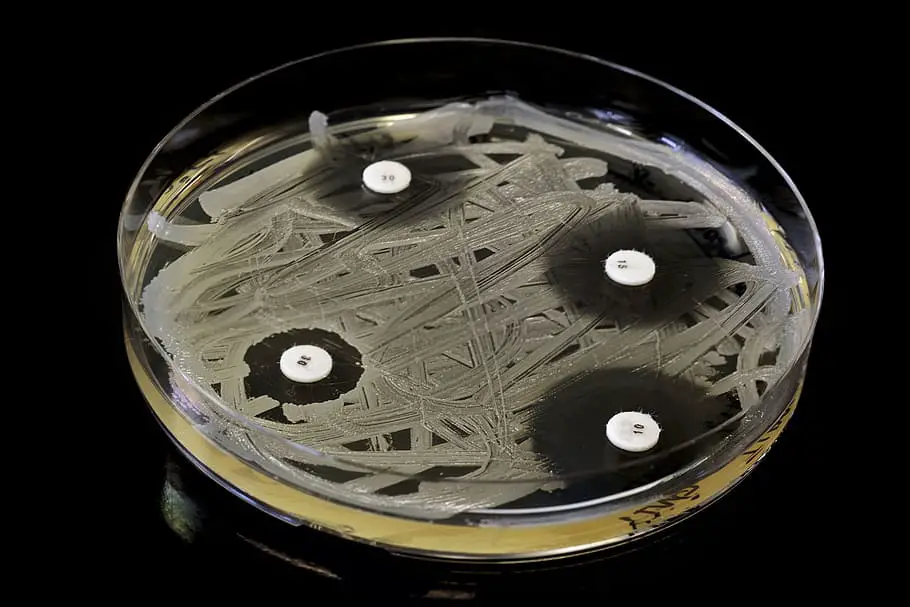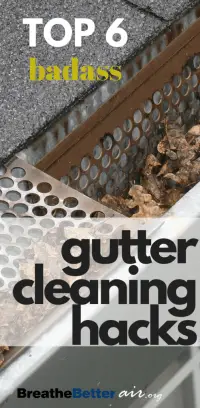The easiest way to tell the difference between mold and mildew is by the color.
Mildew is usually gray or white while mold ranges from green to yellow to black.
What does mildew look like?
Mildew is usually described as being powdery or fluffy and growing in a flat pattern. It is distinguishable from mold in that mold is usually slimy with fuzz growing on it. Mildew can be so subtle that it can be mistaken as a wall or surface that just looks dirty.
What is mildew?
Mildew is a type of mold in that it is basically mold that hasn’t fully developed yet.
And because it is in this early stage, it appears more like a white powdery substance on top of a surface.
It’s common to find mildew in the shower or shower curtain.
Because it is usually found on the surface when it is in the home, cleaning it is much easier and can usually be done with a household cleaner and a brush.
Is bleach or vinegar better to kill mold?
Both bleach and vinegar are known to be able to kill mold and mildew but vinegar the better choice because it is able to penetrate mold deeper and get down “to the root. Whereas bleach will only clean the surface.
Killing mold with vinegar and hydrogen peroxide?
Killing mold with vinegar and hydrogen peroxide is more effective than using bleach. Both peroxide and white vinegar are disinfectants that can get down below the surface.
There is one caveat to using both hydrogen peroxide and vinegar to kill mold and that is, you should never mix the two. When they are mixed, they can create peracetic acid, which is a irritant to your eyes and skin and potentially your respiratory system.
If you’re going to use this method, spray the hydrogen peroxide on the mold and give it about a minute before you spray the vinegar on it.
Does vinegar kill mildew?
Vinegar is hands-down the best all natural way to kill mildew. A easy 2 to 1 ratio of vinegar to water in a spray bottle will kill the mildew and your shower and disinfect it.
The process takes approximately one hour. Spray your white vinegar and water directly on the mildew, give it at least one hour, then wipe it off.
Can mildew make you sick?
Mildew is mold. And though it may not be as threatening as a full-blown case of mold growth, mildew still has the capacity to make you feel ill let and trigger allergies.
Some of the symptoms that are related to mold and mildew are:
- Sneezing
- Coughing
- Itchy eyes
- Running news
- Stuffy nose
- Watery eyes
- Fatigue
Mold spores are also linked to asthma.
How do you know it’s mold that’s making you sick?
The easiest way to figure out if it’s mold making you sick is to remove yourself from the area where the mold is noticeable.
If you find that you are experiencing symptoms when you are in a certain room, then you may be having an adverse reaction to mold spores in the air.
Is mildew dangerous?
In the same way that mildew is considered a lesser form of mode, the effects that mildew can have on your health or also considered lesser.
But mildew is a fungus and persons with compromised immune systems or pre-existing conditions like asthma should certainly view mildew as a hazard.
Black mildew?
Mildew can be considered a light version of mold. Mildew is typically a white powdery looking mild mold growth. Mold on the other hand can appear black and usually does have some kind of black or dark green color about it.
What does mildew smell like?
Musty. Musty is defined as smelling moldy. Well that’s helpful…
The smell of mildew is reminiscent to rotting wood or stinky socks. It is a stale damp, decaying odor. One that is usually easily noticeable but hard to describe.
The smell of mildew compared to the smell of mold is much less noticeable than mold.
The intensity of the musty smell associated with mold and mildew is also a good way to distinguish whether you have mold for mildew.
 Recap
Recap
What is the difference between mildew and mold.
Mold and mildew are in the same family much the way that a son and father all related.
Mildew is mold that has not developed fully yet.
The easiest way to tell the difference between mildew and mold is the color.
Mildew is usually White or gray while mold has advanced into deeper darker colors black black, green, yellow and red.
Another way that you can tell the difference between mildew and mold is that mold smells much stronger than mildew.
Another difference between mold and mildew is the ease in which mildew is removed compared to mold.
White vinegar is the weapon of choice when removing mildew from areas like your shower and shower curtain. Using a easy 2 to 1 vinegar to water solution, simply spray it directly onto the mildew.
Give it about an hour then wipe it off.
If you want to take the disinfecting route a little further, spray the white vinegar solution, give it a couple of minutes, then spray hydrogen peroxide solution directly on the mildew.
Wait for approximately an hour, then wipe it clean.
Other differences between mildew and mold are the symptoms that you can experience related to mold spore exposure.
Just like the other differences between mildew and mold, the symptoms that mildew can cause, like headaches, sneezing, fatigue, the and itchy eyes,
are not typically anywhere near the level of intensity that having a mold allergy attack can cause.
But there are always exceptions to the rule. If you are susceptible to mold spore allergies or if you have a weakened immune system or other pre-existing conditions. Then you should treat exposure to mildew no less than you would being exposed to mold.



 But…
But… Conclusion
Conclusion